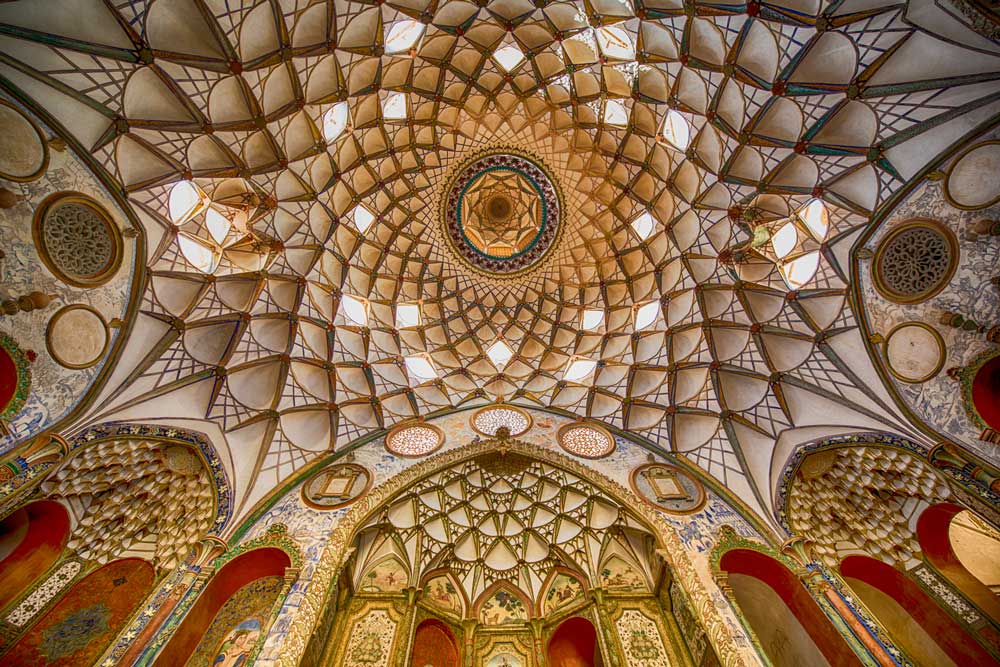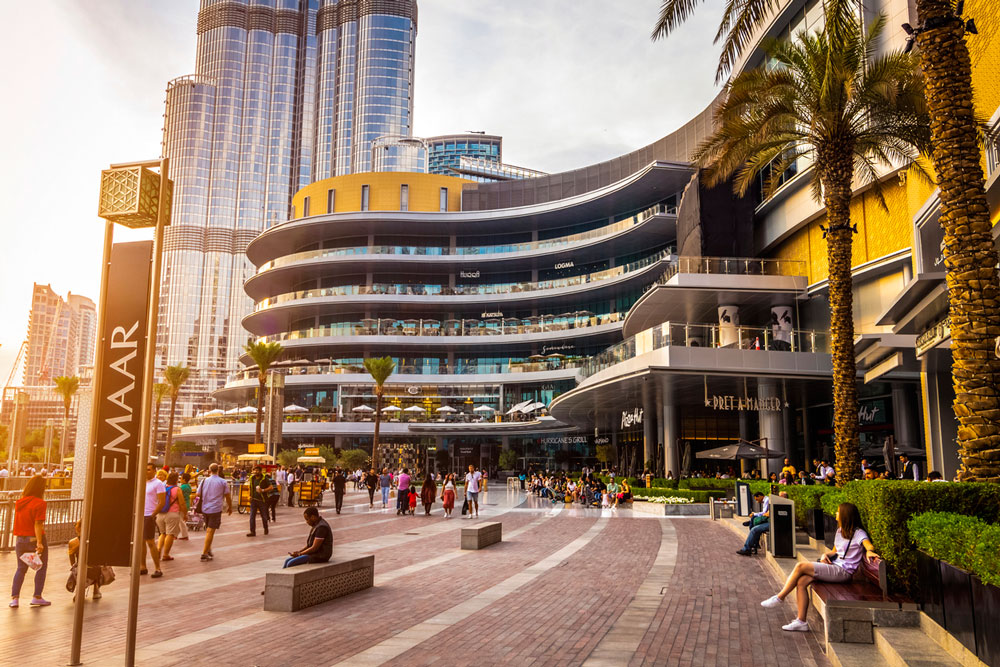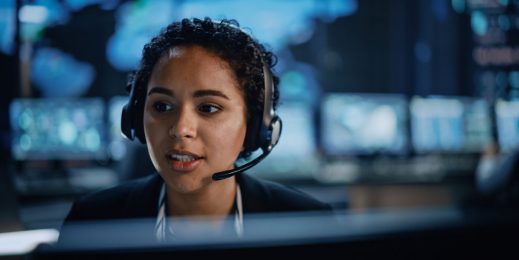
The digital difference – Luxury retail’s next frontier in the Middle East and Africa
How luxury brands are using technology to win the hearts and minds of customers
The success of the luxury retail industry is steeped in deep history, rich heritage and tradition. Many of the luxury brands we covet today have been around for over a century. TAG Heuer, the Swiss luxury watch brand, for example, is almost 160 years old. Louis Vuitton, the French fashion house most famously known for its extravagant handbags, is 165 years old. And Prada, which offers a range of men and women’s luxury fashion, eyewear and fragrances, is 106 years old.
Until now, these high-end brands have stood the test of time. However, their newest challenge is operating in the age of digital disruption, where innovative players are reshaping the customer experience by offering a new level of personalisation and customer satisfaction. As a result, expectations for these iconic luxury brands are going up.
For years, many luxury retail stalwarts were wary of tech. Understandably, the move towards digital was met with a little apprehension as many chose to focus on more traditional ways of building relationships with customers.
Today, however, things are different. These views are being disregarded in favour of digital technologies – from cloud computing to artificial intelligence (AI) – that are helping companies remain competitive.
According to Ramy Fares, head of retail for Microsoft Middle East and Africa: “The arrival of online luxury aggregators like Farfetch, Net-a-Porter and others are playing a significant role in the digital transformation of the luxury industry, forcing brands to transform to remain competitive and relevant in today’s digitally-driven world.”
Pride in provenance
Digital has changed the way luxury outlets market and sell merchandise, but these brands continue to pride themselves on heritage, prestige and exclusivity. While there is pressure from social media to make these labels seem “cool” or “sexy”, brands that successfully navigate the tension between remaining at the cutting edge of innovation, without losing their distinct identity, are thriving.
When Angela Ahrendts took over as CEO for iconic British fashion label, Burberry in 2006, the company’s lacklustre performance spurred her to adopt a radical new approach to reinvigorate the 161-year-old brand. Along with chief creative officer Christopher Bailey, they declared that they wanted Burberry to become the world’s first fully digital luxury company.
Under their leadership, Burberry embarked on a remarkable transformation to completely overhaul its business model to blossom in today’s digital age. They did this by launching a number of digital strategies including consolidating all their regional websites into one platform, empowering employees and customers with digital skills and tools, and embarking on a social media strategy that remained true to the brand’s roots and deep history.
Burberry also did a remarkable job in personifying the digital experience at some of their physical stores by completely reimagining the shopping experience for customers. Their flagship store on Regent Street in London is inspired by the Burberry.com sitemap. When a customer walks into the store, they feel as if they are walking into the company’s website. The store includes digital screens on floors and wrapped around the walls, live-streaming hubs and mirrors. The screens display models walking along catwalks from Burberry shows.

Clicks, bricks and data-driven insights
According to Fares, this focus on creating a differentiated customer experience in physical stores is one of the biggest trends driving the transformation of the luxury retail industry.
But he adds that while creating a memorable in-store experience has always been vital to the success of luxury brands, evolving consumer demand means brands must deliver a compelling online experience as well. “Businesses should maintain their identity at every part of the buyer journey,” he says.
This is because billions of people now spend more time online each day and are increasingly looking to purchase luxury goods. The Middle East and Africa, like the rest of the world, has seen massive growth in digital commerce. Mckinsey predicts that e-commerce will be worth $75 billion in Africa’s leading economies by 2025, and a study by Gulf Pinnacle Logistics earlier in 2018 found that the Middle East’s e-commerce market is expected to reach $23.7 billion by 2022.
The trend is clear, and luxury retailers in the region should take advantage of e-commerce as part of their strategic channel mix. It’s not about presenting customers with a binary choice between physical shops and digital platforms, but about understanding the function of each in the customer journey. It’s also about understanding that while customers still value the in-store experience at high-end shops, they appreciate expediency.
High street versus AI street
Alongside memorable in-store experiences, the luxury retail industry has also survived with a business model built on delivering excellent service and attention to detail.
For luxury brands that want to continue focusing on these core values, AI offers enormous potential by understanding customers better than ever before. “AI is especially valuable when it comes to delivering on the promise of exclusivity and hyper-personalisation,” says Fares.
For example, 109-year-old company, L’Oréal, adopted modern technology to meet the needs of customers, while improving the workflow and efficiency of its employees. L’Oréal uses algorithms and machine learning to predict customer demands based on a wide variety of data gathered from social media, financial markets, and even the weather to name a few. L’Oréal can now forecast in a much more efficient manner, saving time and energy, and reducing costs.
Using AI, the company has also embraced a fully digital changeover system during product manufacturing processes. Instead of having to manually change equipment modules in machinery to set up the creation of different products, the process is now done automatically. This has not only enabled L’Oréal to provide a superior service to customers but has also empowered employees at the company to be more productive, freeing up their time to focus on more important and strategic tasks.
Engineering trust
While technologies like AI and the intelligent cloud are enabling hyper-personalised customer journeys, there needs to be trust when it comes to how the data is collected. “Luxury brands – and all other retail brands – must protect their supply chains and ensure their customers are receiving the services they signed up for,” says Fares.
Over the last decade, cyberattacks have also become more frequent, and as an increasing number of retailers take their operations online, the consequences are greater. Hackers can gain customers’ personal data, obtain intellectual property like designs or patterns, or force a company to take down its website and lose sales.
Retail companies need to remain one step ahead of attackers, by assessing the current state of their cybersecurity solutions and partnering with a technology provider that is committed to the highest levels of trust, transparency, standards conformance and regulatory compliance.

The rise of the Middle East powerhouse
According to Fares, the Middle East is increasingly becoming a powerhouse in the luxury retail sector, competing with the likes of Milan, Paris and New York. In fact, the luxury goods market in the Middle East and Africa reached $11.5 billion in 2017 and is forecast to grow 5.6 percent over the next five years to reach $15.1 billion by 2022. The region promises to be a lucrative opportunity for luxury brands.
The reasons for this are many, including a young and wealthy consumer base, a focus on tourism and a willingness to adopt cutting-edge modern marketing techniques. In fact, spend on luxury goods in the Middle East averages around $320 billion a year.
According to Fares, digitally innovative malls in Abu Dhabi, Dubai and Riyadh have also helped put these cities on the map for the luxury retail industry.
Dubai Mall is not only a triumph of engineering but is also the world’s largest shopping and entertainment destination, and home to over 1200 retailers offering 500 premier brands. Boasting an area larger than 200 football pitches, the mall attracts more than 80 million people a year, well ahead of its nearest competitor, New York’s Times Square.
Developed by Emaar Properties, the Dubai Mall has become something even more: A retail experience of the future, with a new digital nervous system that connects people, anticipates their needs and curates memorable experiences.
As more people gravitate toward online shopping, Emaar is using modern technologies from Microsoft to transform brick-and-mortar retail at the mall into engaging experiences that go beyond mere product fulfilment.
Microsoft’s retail and luxury goods vision
It’s clear that the digital transformation of the luxury retail industry is no longer about simply managing costs and increasing efficiency. Rather, it’s about enabling companies to react to brutally competitive market forces with new service models, business practices, supply chains and more. According to Fares, this all boils down to creating ‘magic moments’ for customers.
And at the heart of this revolution lies data, alongside the tools required to analyse it to help businesses continuously evolve, improve, and grow – all while creating and maintaining customer loyalty.
Microsoft is partnering with luxury retailers and brands to help them reimagine their business and thrive in today’s competitive environment. Microsoft and partner solutions enable them to combine the best of digital and in-store to deliver personal, seamless and differentiated customer experiences while empowering employees to deliver maximum business impact.










![A security team analyses key data from a visual dashboard.]](https://news.microsoft.com/wp-content/uploads/prod/sites/133/2023/04/Security-Sprint_TL_Banner-Image-519x260.jpg)



